Good leads are like diamonds — rare, valuable, and tough to crack.
Every good lead is a likely opportunity to close a deal, and giving those leads the premium treatment means managing the deal flow — or journey through the sales funnel — as efficiently as possible so that no lead is left in the dust.
We’ll walk you through how you optimize your deal flow process as well as break down the features you should look for to help you do so.
What is deal flow?
Deal flow describes the flow of potential customers as they journey through your sales funnel from prospect to closed deal and the management of that process so that it runs smoothly.
Optimization of your business’ deal flow is traditionally done within a customer relationship management (CRM) platform.
A CRM platform stores and organizes data about your customers within one central, shared location. It tracks lead interactions and manages your pipeline from generation to post-sale.
For instance, many sales teams use monday.com for deal flow management. Our work operating software (OS) allows you to custom-build a CRM for your unique business needs.

But we’ll talk more about that in a moment…
Why is effective deal flow important?
Because it’s hard out here for a sales team.
It can take as many as 18 calls for a sales rep to actually connect with a buyer, and of all the emails your team sends, only 24% of them (on average) are even opened.
60% of customers say ‘no’ to a sales pitch before they finally say ‘yes,’ but 48% of salespeople never make a single follow-up attempt.
In short?
Without optimization of your deal flow, you’ll end up wasting a huge portion of your business’ sales budget.
What does an effective deal flow look like?
To get prospects flowing through your pipeline smoothly, you’ll need a CRM that collects and organizes all of your customer information and data in one place so that your cross-functional business teams can work together more efficiently.
You’ll also want a CRM that automates a lot of the oh-so-important manual labor.
Here are a few of the key elements in an optimized deal flow.
1. All customer data in one place
Imagine you’ve purchased a new keyboard for your home office. When the keyboard arrives, a key is missing, so you contact customer service, understandably frustrated.
The next day, the company’s marketing team launches an email campaign asking customers to leave a review on social media.
You leave a negative review both because you had a bad experience, and it’s been over 24 hours without hearing back from the company’s customer service team.
That company’s marketing team probably wouldn’t have included that customer in their email campaign if their database showed that they had recently filed a complaint, but these types of mistakes happen all the time when companies are siloing data between teams.
For the deal process to flow seamlessly, everything about a prospect or lead needs to live under one roof — communications, contact information, and customer history.
When every member of your team who interacts with customers has every single piece of information at their fingertips, they can make informed decisions on how to provide that customer with a good customer experience.
Sales teams that use monday.com as a CRM are able to keep all information about a single customer in one place using customizable columns and a visual leaderboard that reflects the sales pipeline.
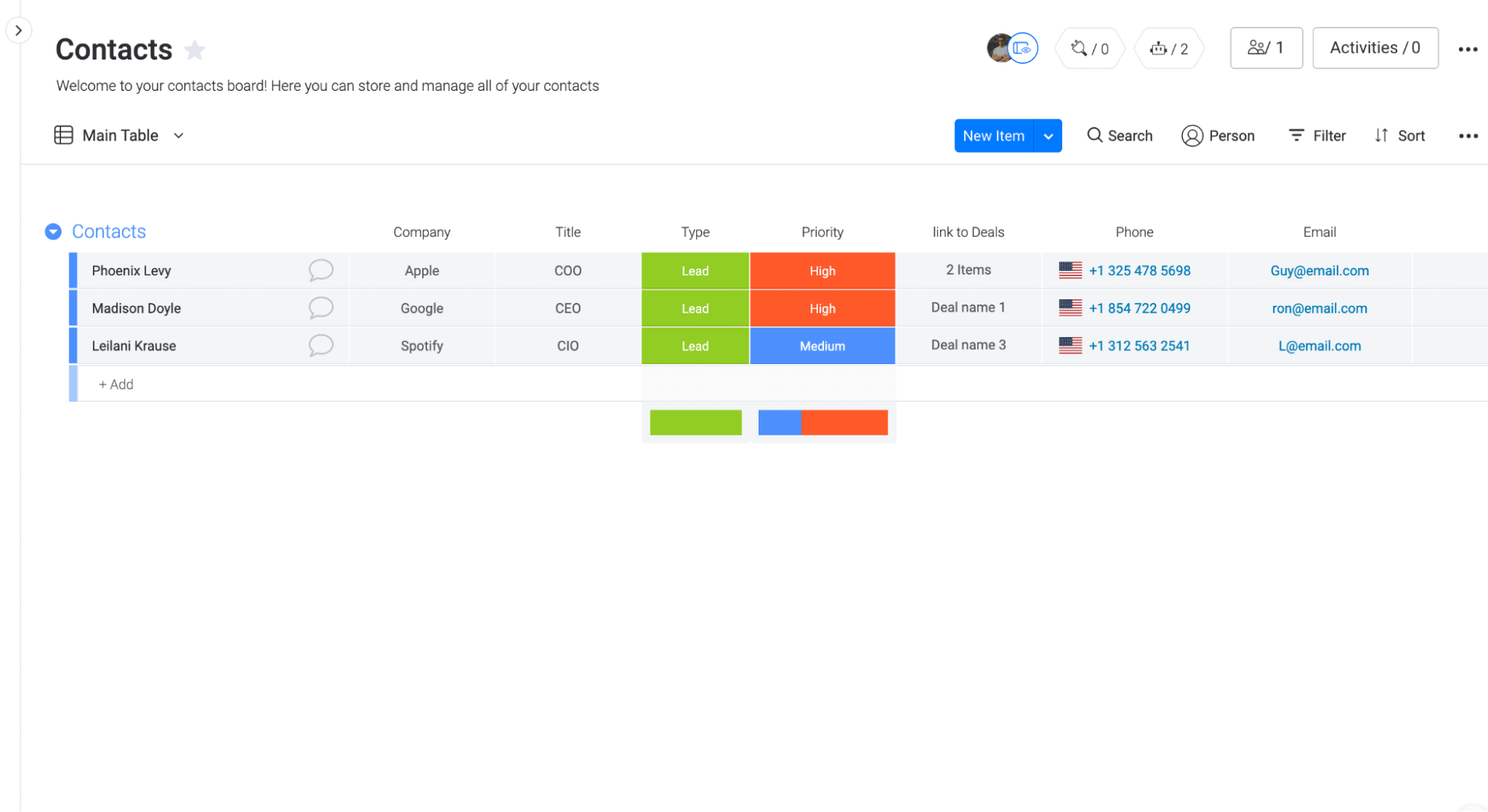
With a board like the one above, you can manage your contacts, documents, tasks, and more — no more jumping between tools.
Customer data no longer gets lost in emails or social media messaging, and everyone on your team always has up-to-date contact information.
2. No gaps in customer communications
To fully optimize your deal flow, you need to be able to see data from other teams, including marketing, customer service and support, finance, etc., so that you always have a clear picture of what the customer needs before making contact.
One of the most common examples of a deal flow not working well plays out in enterprise technology sales.
Someone interested in seeing a demo fills out a form and books a meeting where they expect to see said demo.
Instead, they get a meeting with a sales development representative (SDR) that’s actually a pre-screen for the demo where they answer the same questions they’ve already answered through the form.
monday.com closes gaps like these between marketing and sales teams, recording all interactions with a customer, as well as data from those interactions, in one place.

monday.com’s forms make it easy to collect information about new leads, and customizable columns make it so that information is displayed clearly for sales teams.
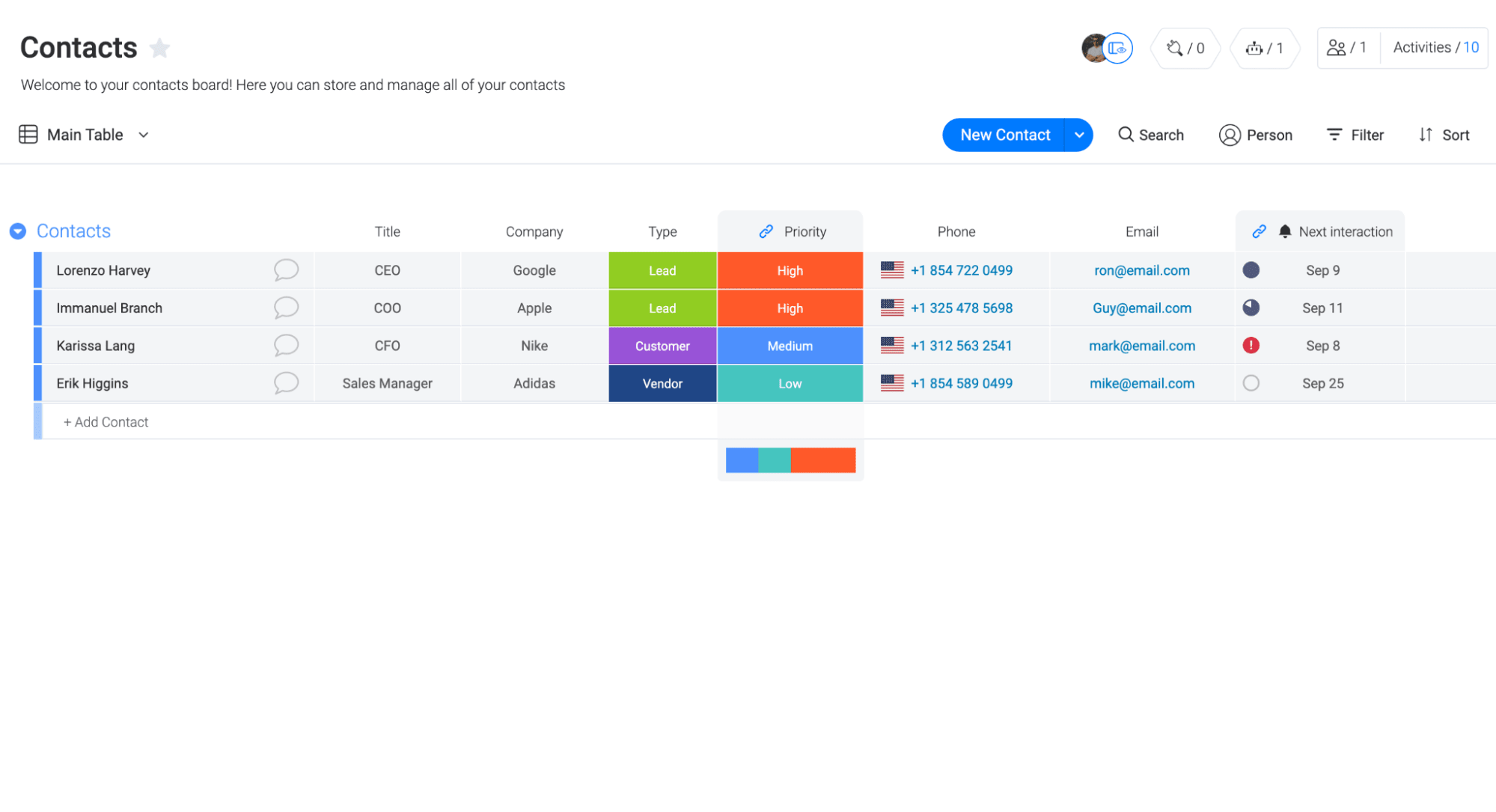
3. Easy access to marketing information
Your marketing team likely produces a variety of customer materials to be published on different sites and platforms across the web. Plus, they probably send automated communications to the entire contact database on a regular basis.
For sales teams to know what’s coming and who’s being contacted, they need visibility into these plans.
Using monday.com’s marketing operations template, you can sync your contact database with your marketing operations board so that everyone has visibility into the marketing calendar.
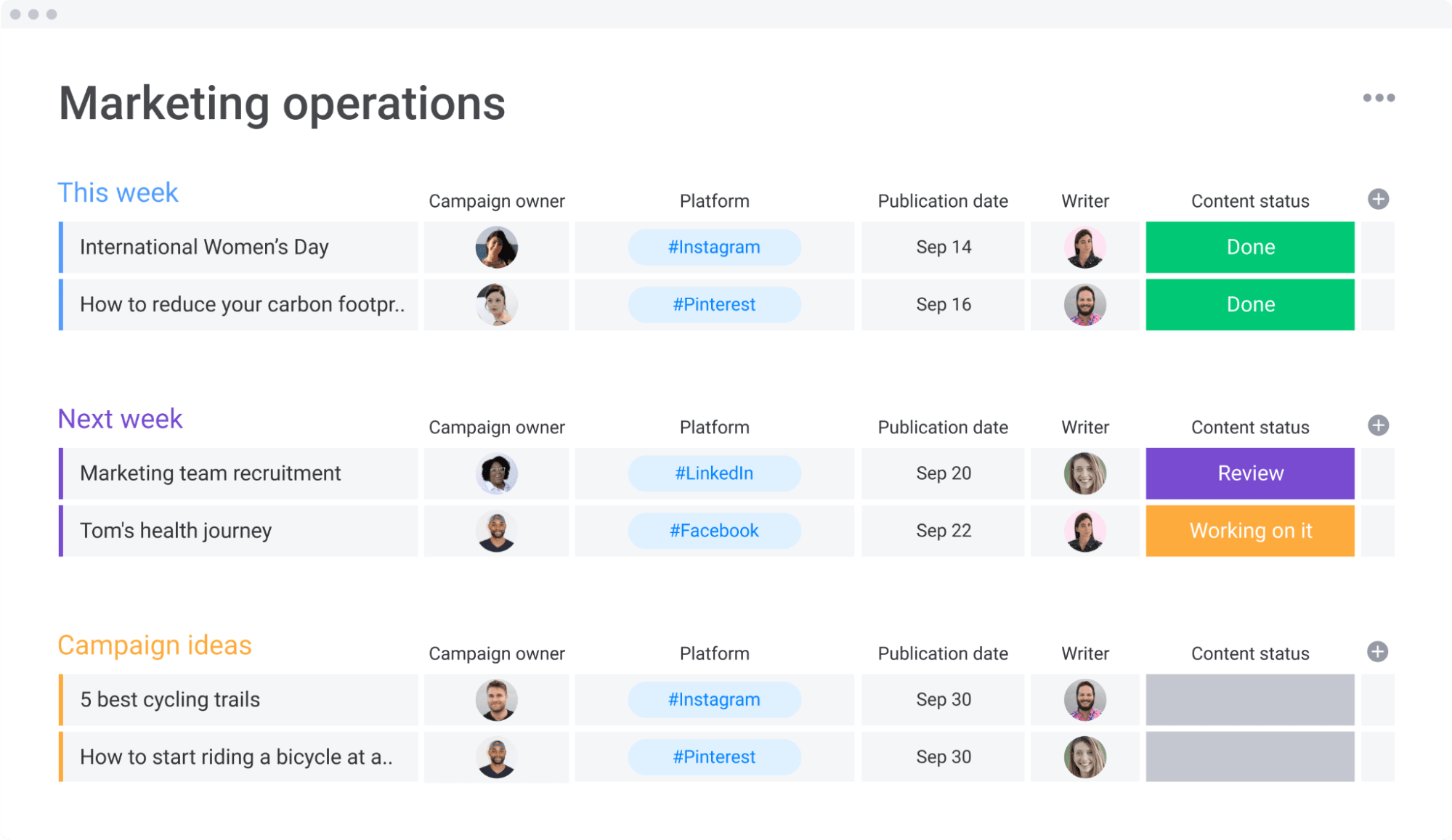
Using this board also allows you to build workflows and manage workloads across teams by using different views, like the workflow view:
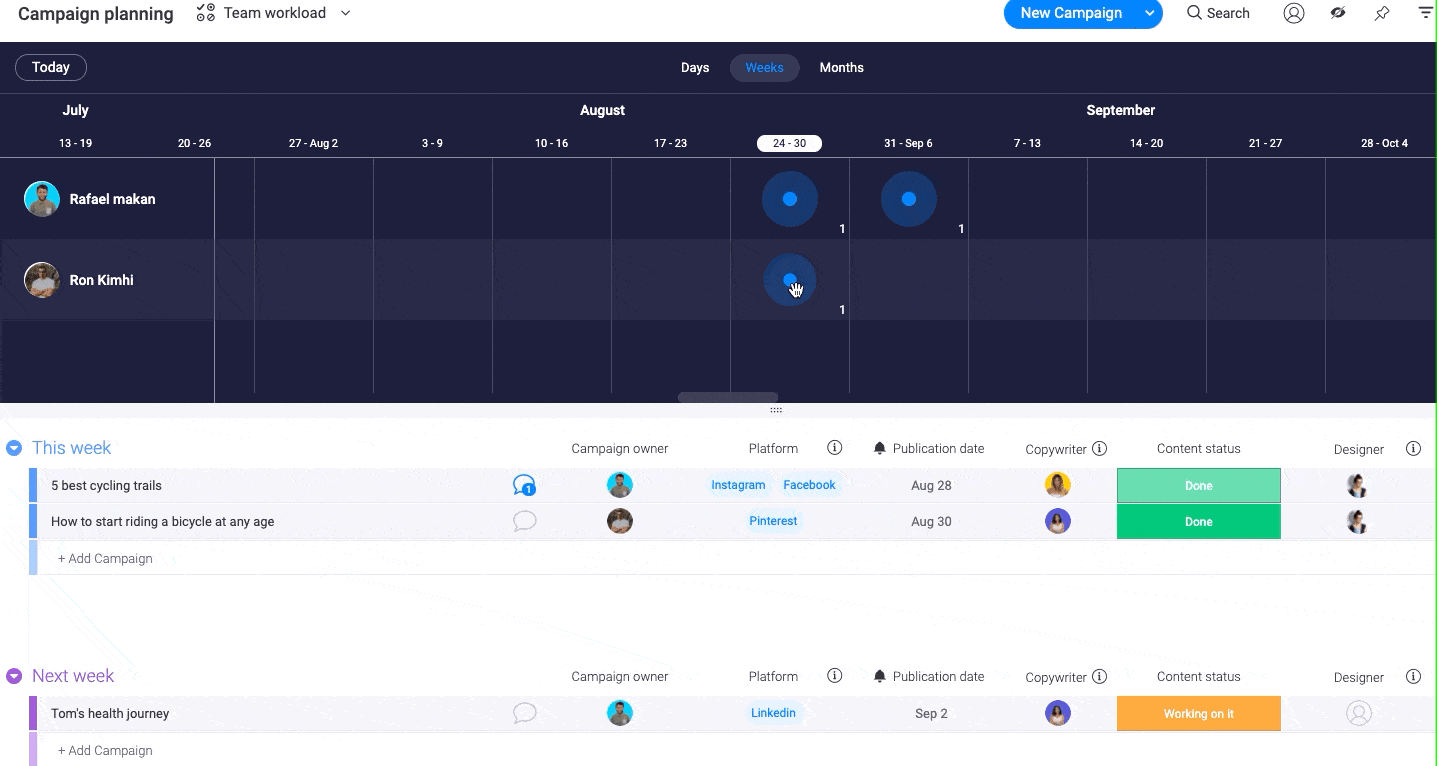
You can also toggle a timeline view to display campaigns and identify process bottlenecks, as well as view, assess, assign, and manage requests from one central place.
4. Visualization of your whole pipeline
Once leads do make it to the sales team, you’ll want to be able to see where they are at a glance, without having to dig through individual contact cards.
Our sales pipeline template visually displays where each of your contacts is in their customer journey using color-coded status updates so you can always see the big picture.

You also have the ability to view contacts or potential accounts by priority, deal size, expected close date, and more.
5. Custom dashboards
Just how optimized is your deal flow? In order to always be able to answer that question, you’ll need a dashboard that reflects status, revenue, potential deals to close, and much more at a high level.
The monday.com Work OS allows you to create custom dashboards that reflect your team’s progress visually and transparently for everyone to see.
Take it a step further by using this data to analyze your sales pipeline, forecast actual revenue, break down deals by sales representative, and get a handle on your team’s capacity.
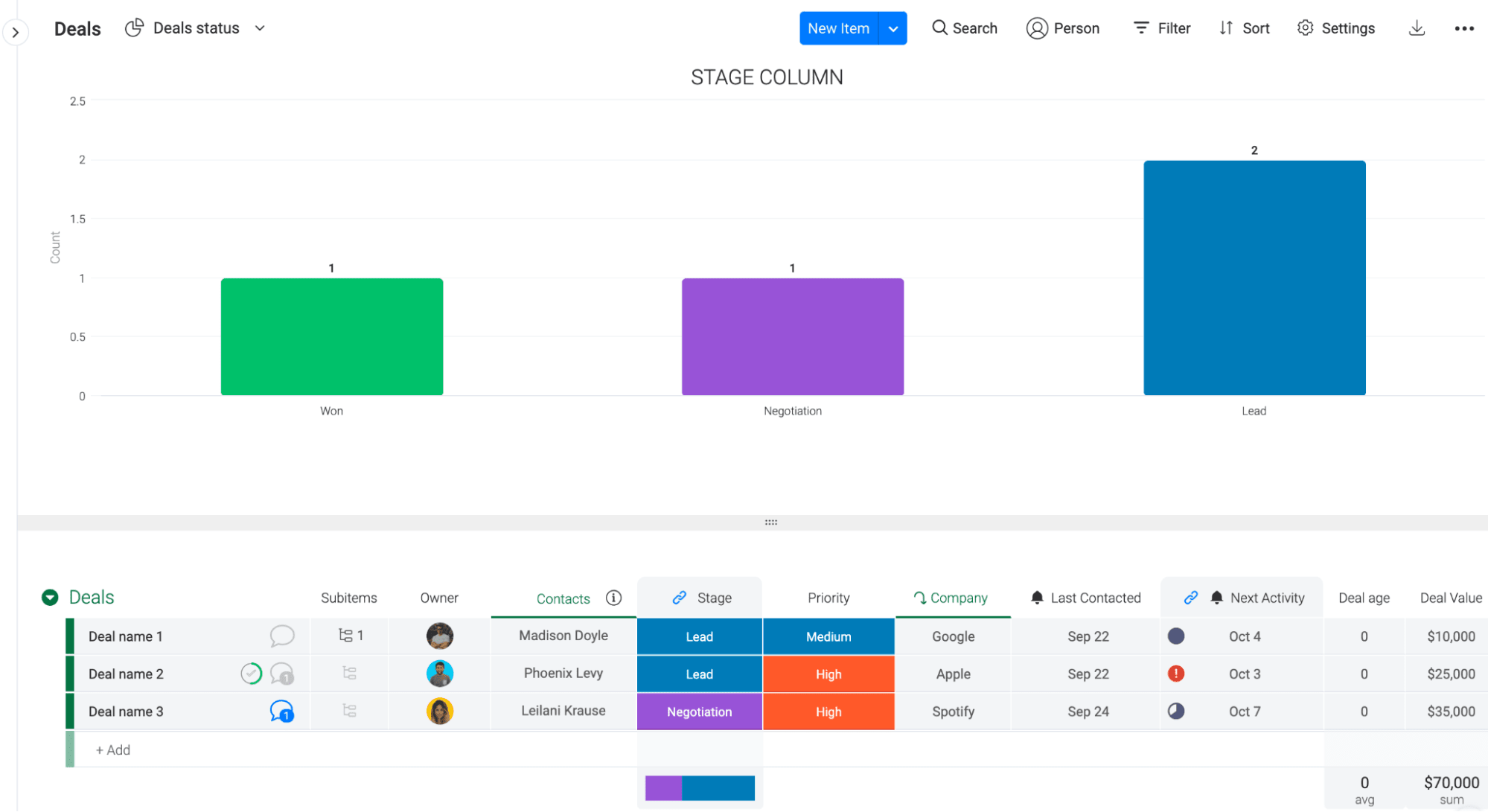
Everyone on your team can display the same data in whichever way works best for them — this includes Gantt chart, timeline view, Kanban board, dashboard view, and workload view.
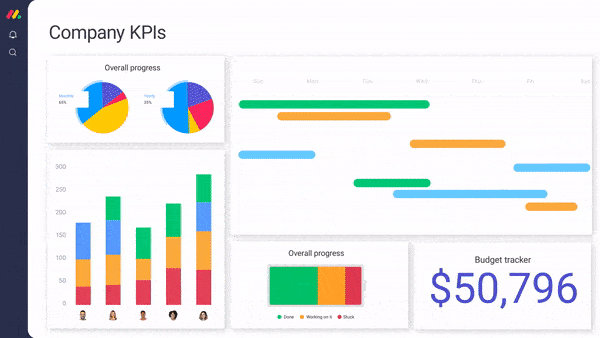
6. Automated workflow
When your deal flow is optimal, your sales teams aren’t stuck with data entry tasks or updating statuses.
monday.com automations remove this type of work from sales teams’ to-do lists for good.
You can set up triggering actions like updating the entire team when a deal closes via email, or contacting the correct sales representative when one of their customer’s contracts is about to expire.
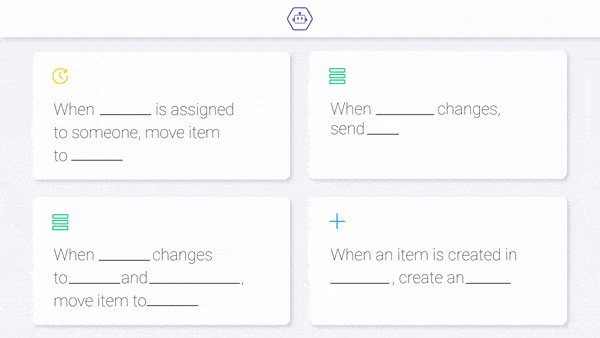
7. Ability to connect with existing tools
You can’t close deals in a silo. Your CRM should integrate with tools your team is already using, as well as those of cross-functional business teams, so that all customer data and information is centralized.monday.com integrates with tools commonly used by marketing teams, customer service, finance, and many others.
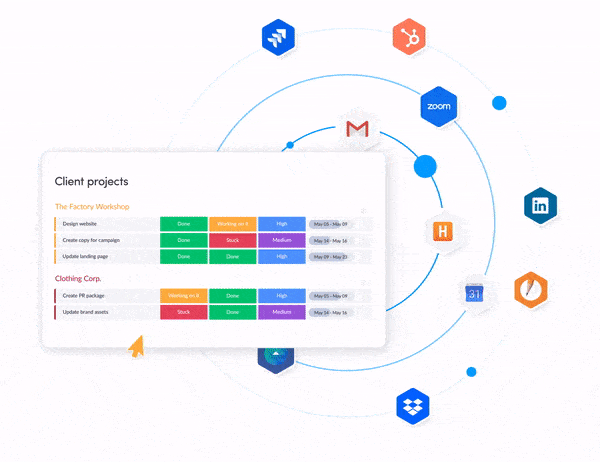
8. Means to support your work wherever you are
Last but not least, your teams should be well-equipped to work from wherever they are, whether that’s the business’ office, their home office, or on the go.
Relying on technology that can function fully on mobile devices, like monday.com, makes this possible.

Don’t risk losing deals because of sub-optimal deal flow
Not seeking to optimize your deal flow management means being OK with not closing as many deals as you could.
The most important part of optimal deal flow is transparency and availability of up-to-date information across cross-functional teams.
When you unlock the flow of information, you grease the wheels of your sales funnel.
monday.com provides teams with the technology to build an optimal and steady deal flow in whichever way makes the most sense for them.
If you’re interested in more movement throughout your sales funnel, get started today.

